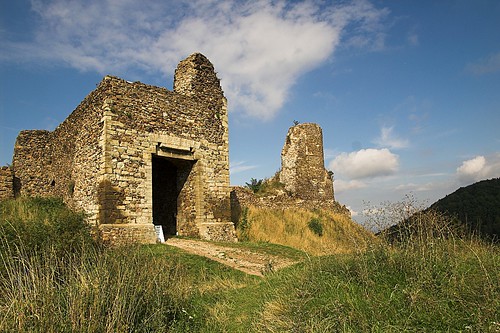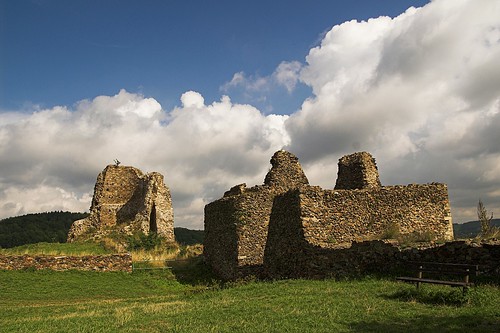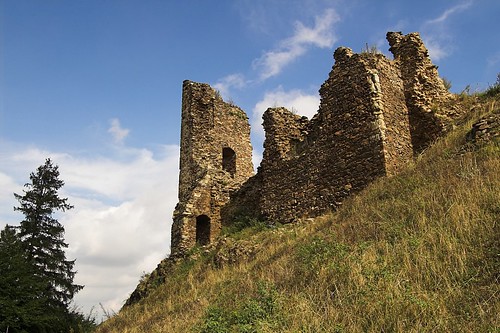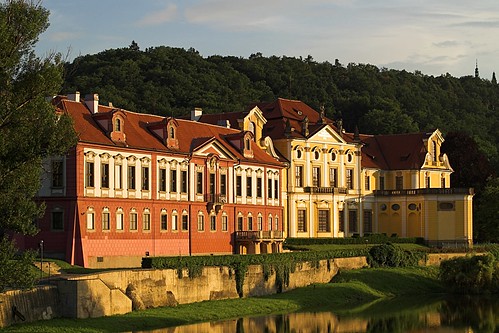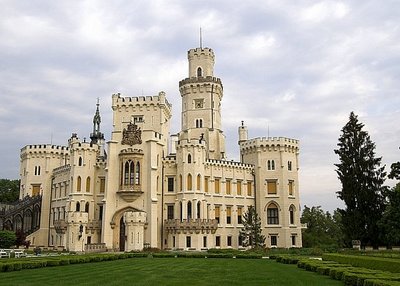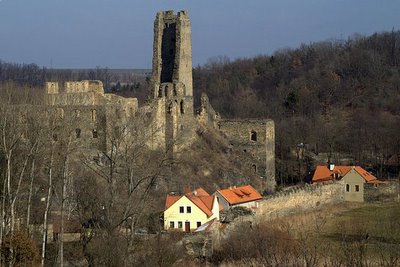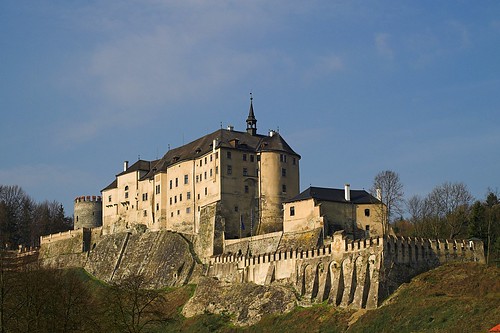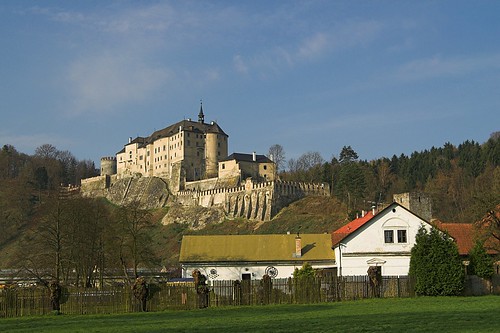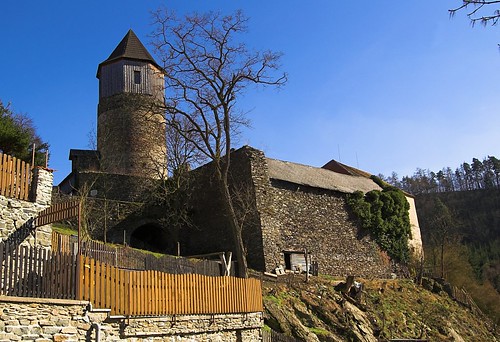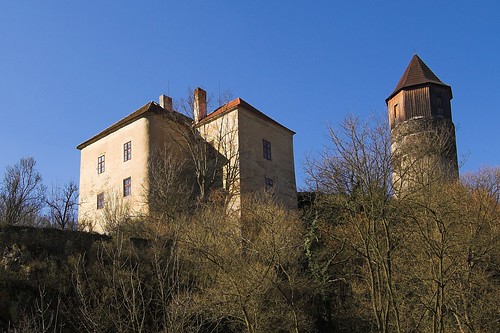Lichnice is an early Gothic castle built in 1250 by Smil from Zitava, who later changed his name to "from Svetlik" or "from Lichtenburg" in German. The castle was enlarged in the 15th century, rebuilt in the 16th century, demolished after the Thirty Years' War and deserted. Now only the ruins remain, but they are well preserved and quite spectacular.
The ruins of the Lichnice castle are located on the rocky hill above the Lovetinska gorge and the village of Podhradi in Zelezne Hory (Iron Mountains) -- a mid-size natural reserve situated North of the town of Chrudim in Pardubicky region. Besides the old ruins you can enjoy wonderful views from the top of the hill as well as beautiful nature all around.
More photos
Main gate of the Lichnice castle as viewed from inner courtyard:
View over the ruins of Lichnice towards Čáslav:
View of the ruins from outside:
The title photo shows the main entrance to the castle courtyard. All photos were taken in August 2006 by me (Marek Prokop) and are licensed under  - Creative Commons Attribution-Noncommercial 3.0 Unported License.
- Creative Commons Attribution-Noncommercial 3.0 Unported License.
How to get there
Lichnice is not very accessible by public transport. The closest towns with regular bus or train service are Čáslav (20 Km) and Heřmanův Městec (13 Km). There is a small local railway from Čáslav to Třemošnice (3 Km).
Lichnice, Lichtenburg, Zelezne Hory, Bohemia, Czech Republic, castle, Gothic, architecture
